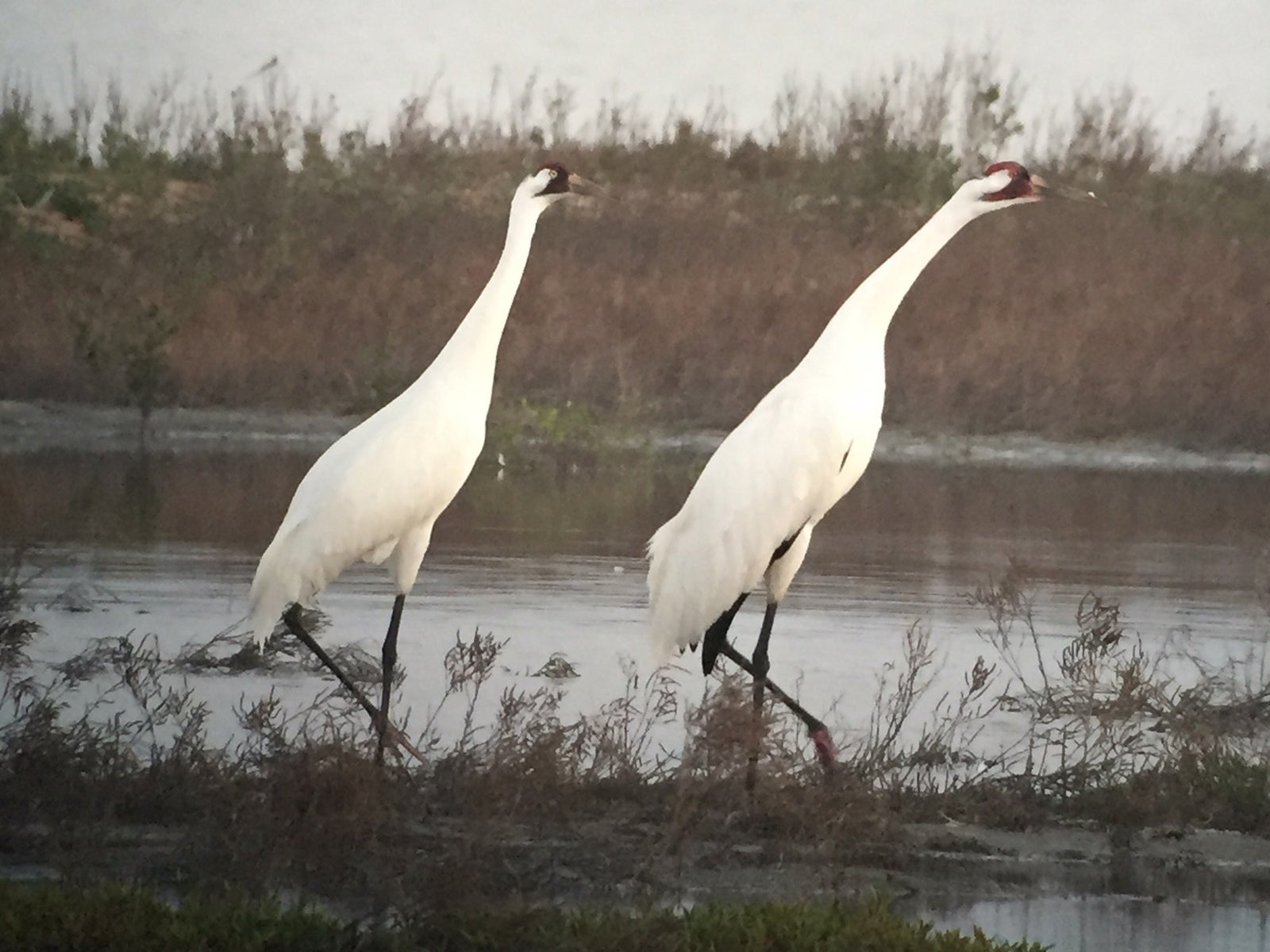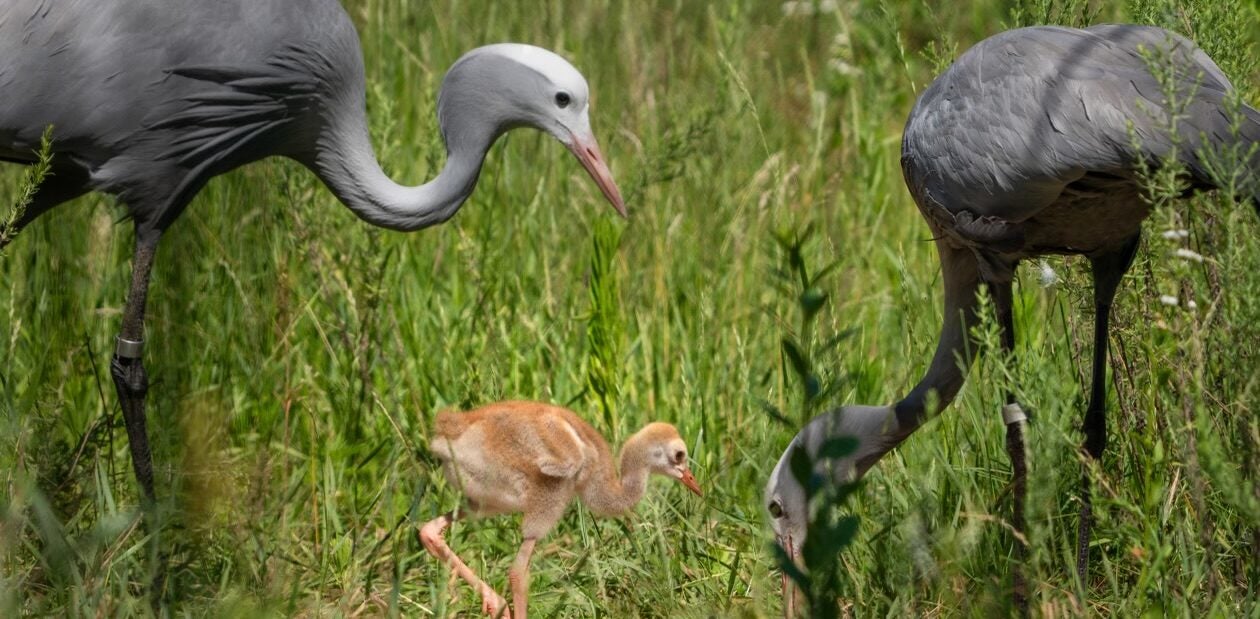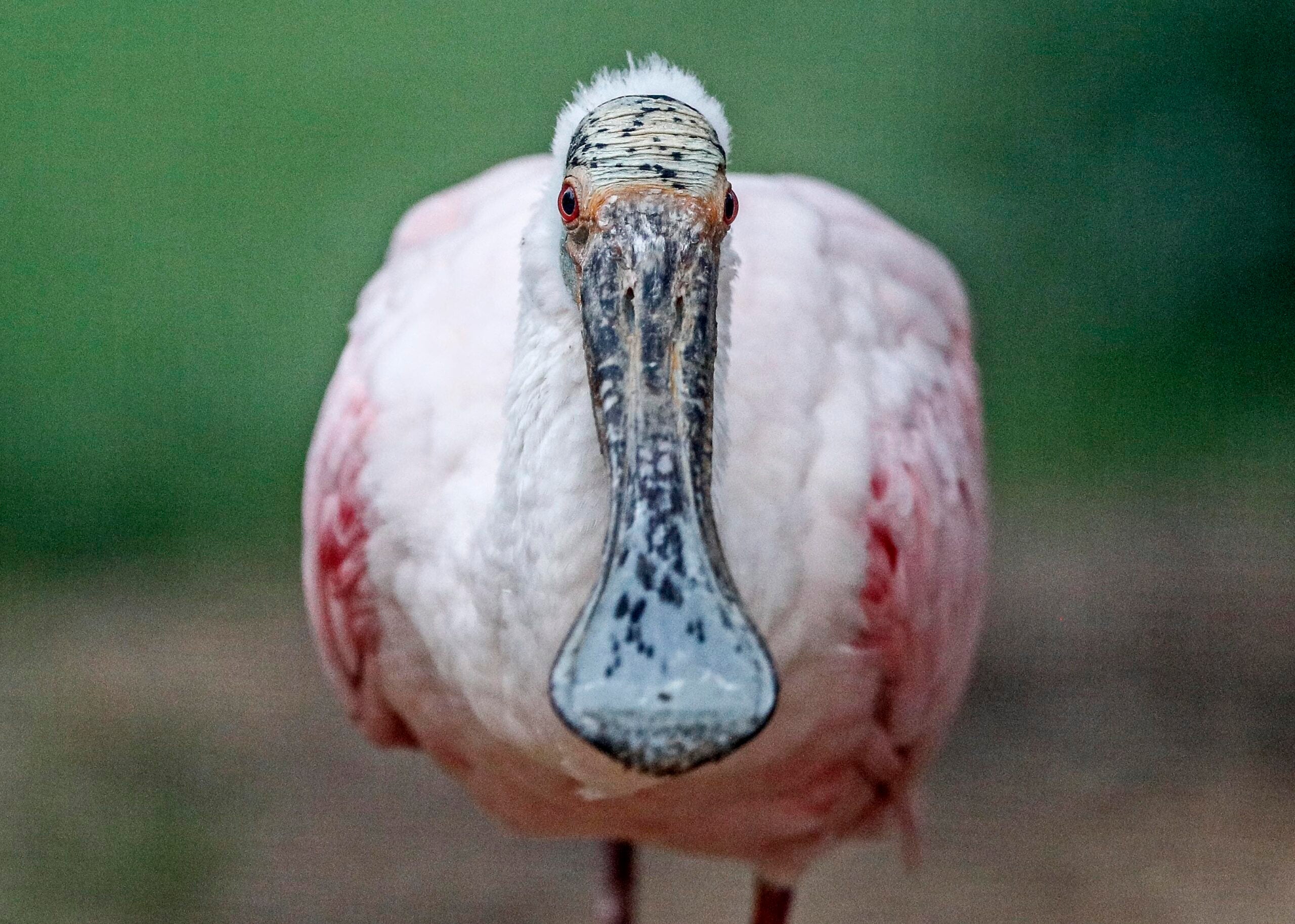The International Crane Foundation in Baraboo is working to alleviate the challenges facing whooping cranes as they return to their wintering grounds in Texas. Not only did Hurricane Harvey devastate local infrastructure, the hurricane also contaminated the birds’ source of fresh drinking water.
The category 3 storm also left senior whooping crane scientist Elizabeth Smith and three newly hired ICF staff members stationed in Texas without a place to work.
“Hurricane Harvey came in and just destroyed the whole office complex, and it had to be totally cleared and has not been rebuilt,” Smith said. “So we basically hired people but didn’t have an office to put them in.”
Stay informed on the latest news
Sign up for WPR’s email newsletter.

The office building used by International Crane Foundation staff in Rockport, Texas was destroyed by Hurricane Harvey. Photo Courtesy of the International Crane Foundation
The storm did spare the team’s boat, camper and trailer used for field work.
“The boat actually fared really well,” Smith said. “We had it between two office buildings there and part of the roof of our building fell over on top of it which actually protected it then from flying debris.”
She said Harvey’s storm surge has left lingering problems for the returning cranes.
“The storm surge over the main part of their wintering range at the refuge was so big; it was 10 to 12 feet. It actually covered the marsh and went a mile and a half inland,” Smith said. “The challenge is that the birds require fresh water to drink on the inland, upland areas, and the storm surge filled all of the fresh water tanks and ponds with salt water.”
ICF staff is working with the U.S. Fish and Wildlife Service and a local organization, the San Antonio Bay Partnership, to repair wells and pump fresh water into the contaminated ponds.
On a good note, the bird’s two main sources of food, blue crabs and wild wolfberries were not affected by the storm.
Wild wolfberries, a main source of food for whooping cranes. Photo by George Archibald, courtesy of the International Crane Foundation
“The whooping cranes will actually leave blue crab areas in the marshes to feed on wolfberries because they’re so easy to pick and eat,” Smith said. “Once the storm surge receded, the wolfberry plants went into a flowering and fruiting mode, and they’ve been doing that now for over six weeks, which is a really long time.”
An estimated 430 cranes are returning to the wintering grounds on the Texas coastline from Wood Buffalo National Park in northern Canada, an increase from last year.
The total whooping crane population is about 650 birds, which includes the flock that summers in Wisconsin and winters in Florida, and the captive breeding population at the crane foundation in Baraboo. Fewer than 20 whooping cranes were alive before recovery efforts started in 1941.
Smith said the returning cranes are a blessing to the people in Texas who are still trying to recover from the hurricane.
“We’re really working with the community to help rebuild personal, human lives, so we’re stepping up our outreach to just kind of give people a break and say, ‘Hey, we have something to celebrate,’” she said. “The cranes are back and we can recover along with them.”
Wisconsin Public Radio, © Copyright 2025, Board of Regents of the University of Wisconsin System and Wisconsin Educational Communications Board.


